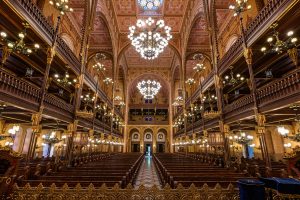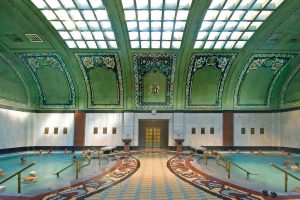Pest is a paradise for architecture lovers, with landmarks that are simply unmissable for any visitor. Following are some of the city’s most iconic buildings – each a masterpiece in its own right, offering a glimpse into Budapest’s rich history and timeless charm.
Hungarian Parliament Building
Completed in 1904 based on plans by Imre Steindl, the Parliament Building is a Neo‑Gothic masterpiece and one of Europe’s most captivating seats of government. Reaching 96 meters in height (a symbolic tribute to 896, the year of the Hungarian conquest) and adorned with 365 towers of varying sizes, the building blends grandeur with meaning. Inside, gilded halls and sweeping marble staircases lead to Hungary’s most precious relic, the Holy Crown. Whether admired from a river cruise, across the water in Buda, or up close on Kossuth Square, it’s a defining landmark of Budapest’s skyline.
1055 Budapest, Kossuth Lajos tér 1-3.

St. Stephen’s Basilica
Just a short walk from the Parliament stands Budapest’s largest church, built as a gesture of gratitude for divine intervention during the 1838 flood of Pest, when hundreds found refuge on the small hill where the basilica (named after Hungary’s first Christian king) now rises. Construction began in 1851 under architect József Hild, who envisioned a grand neoclassical design. After Hild’s death in 1867, Miklós Ybl took over, adding a touch of Neo‑Renaissance elegance. A dramatic setback came in 1868, when the massive dome collapsed, delaying the project for decades. Completed in 1906, St. Stephen’s Basilica reaches 96 meters, exactly the height of the Parliament, a deliberate symbol of equality between church and state.
1051 Budapest, Szent István tér 1.

Hungarian State Opera House
The Hungarian State Opera House, Miklós Ybl’s crowning achievement, took nine years to complete. His Renaissance‑inspired design, influenced by northern Italian architecture, won a close 1873 competition over Imre Steindl and Vienna’s Ferdinand Fellner. Opened in 1884, its limestone façade features statues of sixteen composers, with Mozart, Wagner, Verdi, and Beethoven above, and monumental figures of Ferenc Erkel and Franz Liszt at the entrance. Inside, frescoes by Károly Lotz, Mór Than, and Bertalan Székely adorn opulent halls, while its marble foyer once impressed Emperor Franz Joseph.
1061 Budapest, Andrássy út 22.
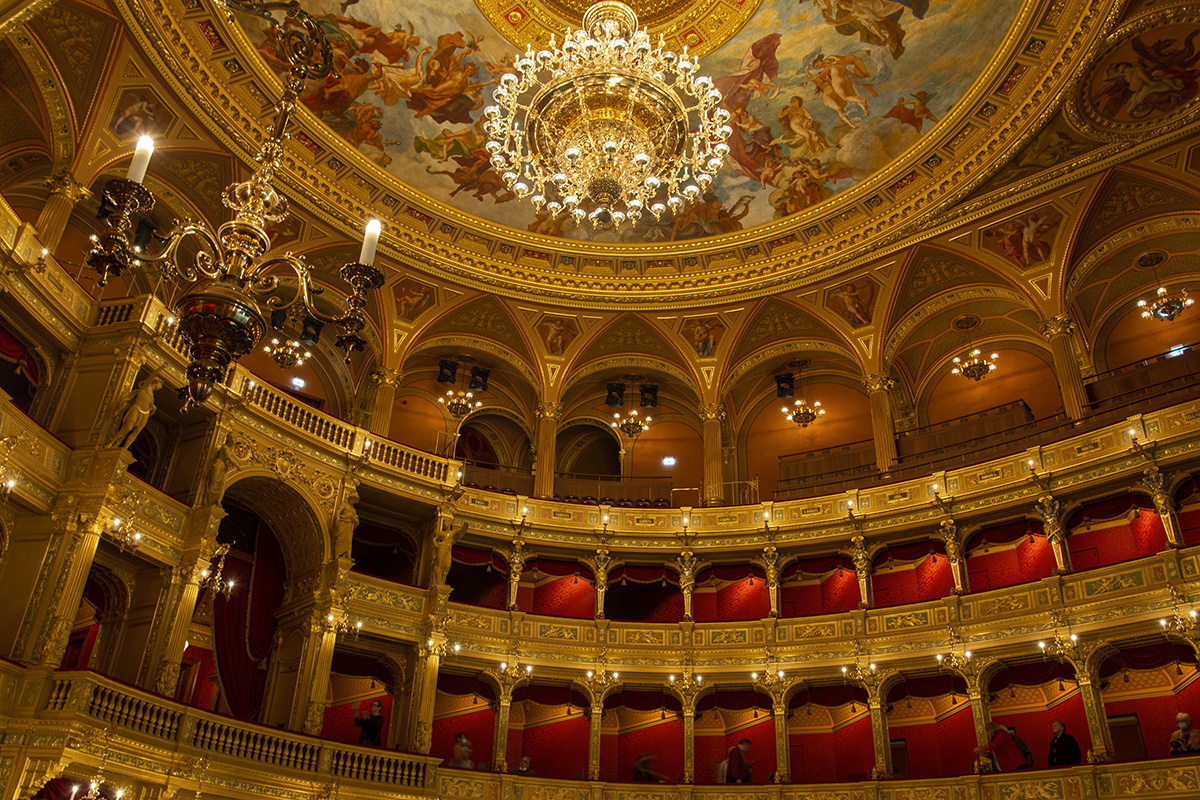
Pesti Vigadó
A jewel of 19th‑century Hungarian Romantic architecture, the Pesti Vigadó (“place of merriment”) was designed by Frigyes Feszl and opened in 1865, replacing an earlier concert hall destroyed in the 1848–49 War of Independence. Its fairy‑tale façade blends Eastern and Gothic motifs, while ornate interiors have hosted generations of concerts, balls, and historic events – including Emperor Franz Joseph’s 1867 coronation banquet and the 1873 merger that created Budapest. Once graced by Liszt and Brahms, today it remains a vibrant arts venue, pairing panoramic river views with culinary pleasures.
1051 Budapest, Vigadó tér 2.
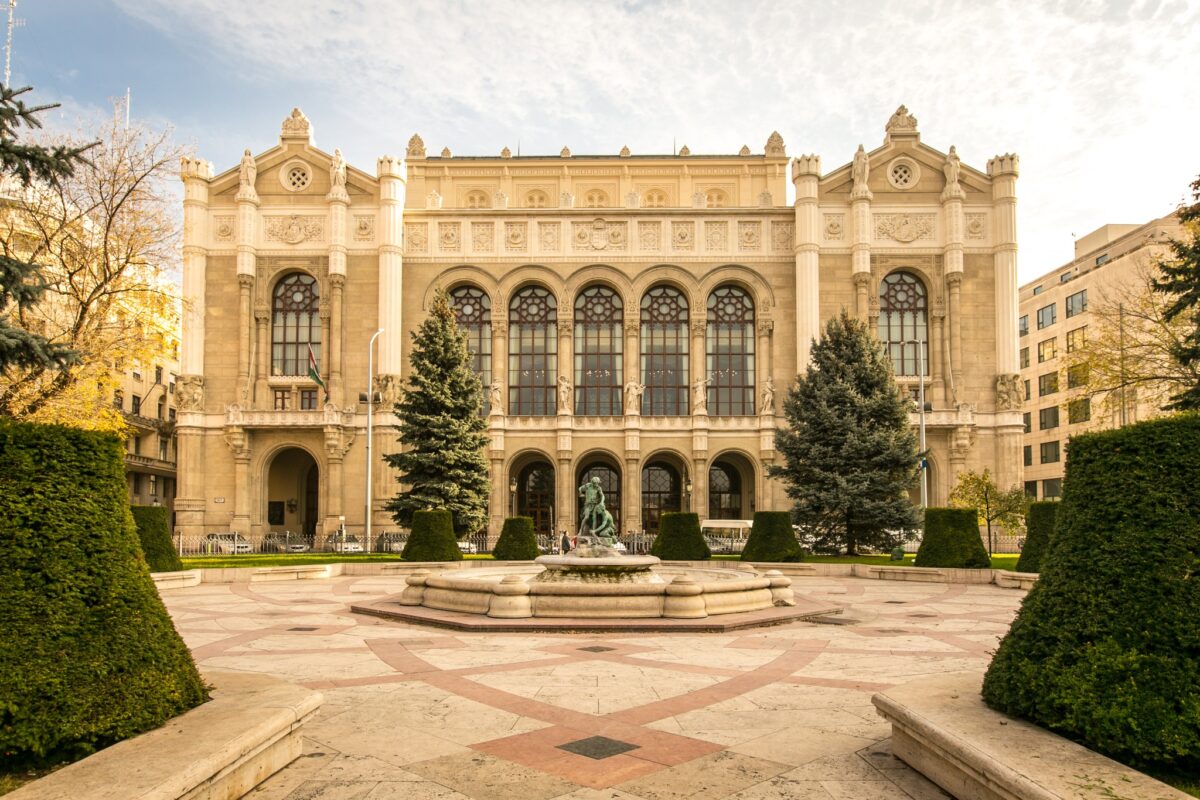
Liszt Ferenc Academy of Music
When Goethe coined the phrase “architecture is frozen music”, he might well have imagined the Liszt Ferenc Academy of Music. Founded by the virtuoso pianist himself, the academy found its permanent home in 1907 in a grand palace designed by the architect duo Flóris Korb and Kálmán Giergl. Originally rich in Art Nouveau detail, the façade was altered under government pressure toward Baroque elements favoured by the imperial court. Inside, Zsolnay ceramics, gilded motifs, and Miksa Róth’s stained glass echo the artistry performed in its luxurious concert hall, where legends from Bartók to Kodály once played.
1061 Budapest, Liszt Ferenc tér 8.

Dohány Street Synagogue
In the heart of Budapest’s lively Jewish Quarter stands the magnificent Dohány Street Synagogue – the largest in Europe and the second largest in the world. Designed by Viennese architect Ludwig Förster and completed in 1859, its Moorish‑Revival style is marked by twin towers soaring 44 meters high and a vast 1,200‑square‑meter interior that seats nearly 3,000 worshippers, arranged in a basilical layout. Visitors can also explore the Hungarian Jewish Museum, the Raoul Wallenberg Memorial Park, and the historic graveyard, all part of a complex that reflects centuries of faith, culture, and resilience.
1074 Budapest, Dohány utca 2.
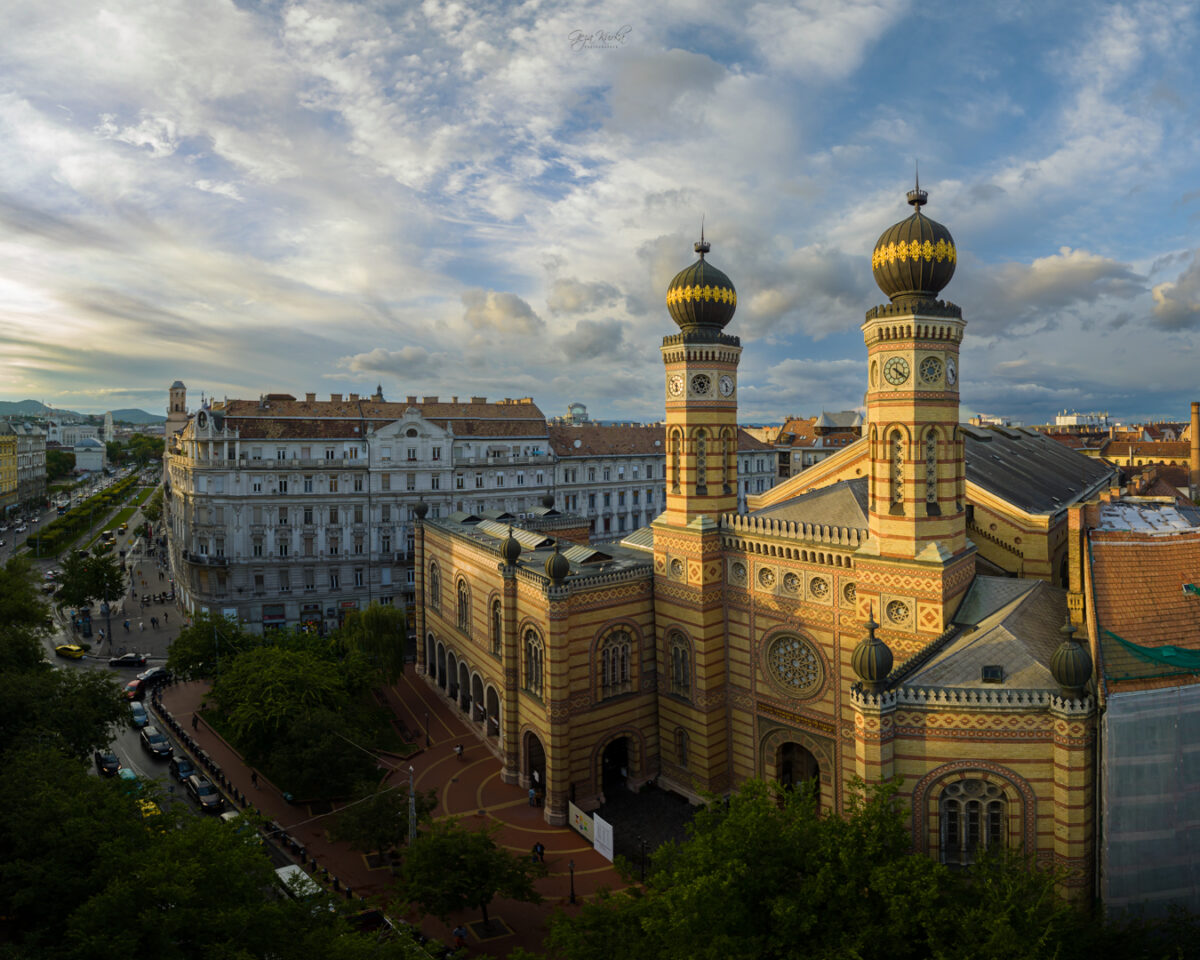
New York Café
Often hailed as the most beautiful café in the world, Budapest’s New York Café opened in 1894, dazzling guests with fountains, ceiling frescoes, Venetian chandeliers, and its famous twisted columns. Legend has it that, during the opening celebrations, young playwright Ferenc Molnár seized the café’s key, ran to the Danube with friends, and tossed it into the river so it would never close. Commissioned by the New York Life Insurance Company and designed by Alajos Hauszmann with Flóris Korb and Kálmán Giergl, the palace boasts a bronze‑faun‑adorned façade and allegorical statues that depict America, Hungary, Wealth, and Liberty.
1073 Budapest, Erzsébet körút 9-11.
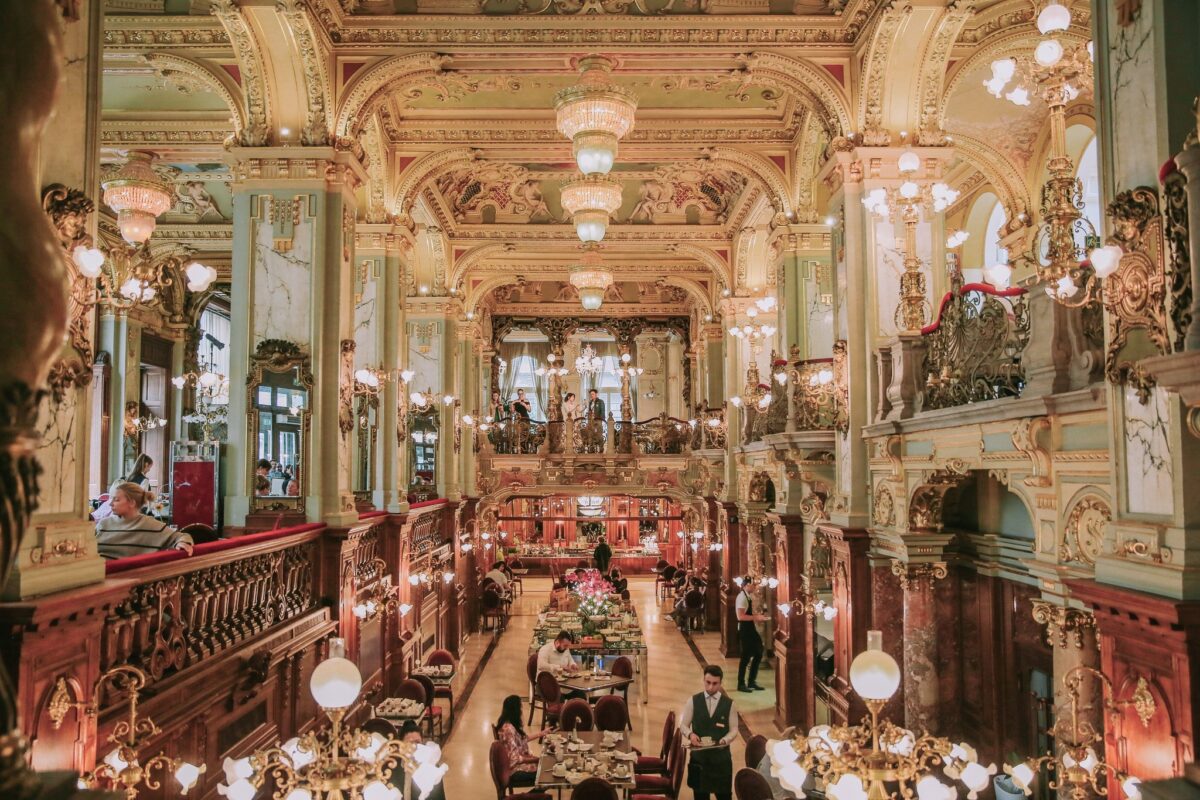
Párisi Courtyard
Budapest’s only surviving turn‑of‑the‑century shopping arcade is a masterpiece of Henrik Schmahl, completed in 1912 for the Belvárosi Savings Bank. Inspired by Paris’s Passage des Panoramas, the historicist palace blends Moorish, Arab, and Art Nouveau motifs in a dazzling display of majolica tiles, Murano glass mosaics, and a spectacular crystal‑prism dome. Today, Párisi Passage Café & Brasserie welcomes guests to linger over coffee, fine dining, or evening cocktails beneath the building’s swank ceiling, surrounded by the elegance of a bygone time.
1052 Budapest, Petőfi Sándor utca 2-4.


 Funzine
Funzine